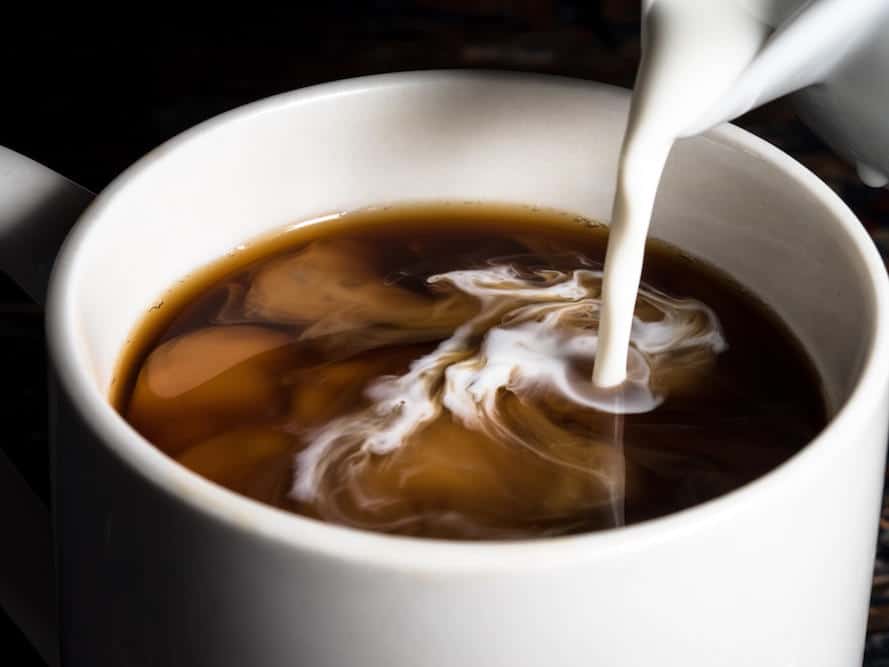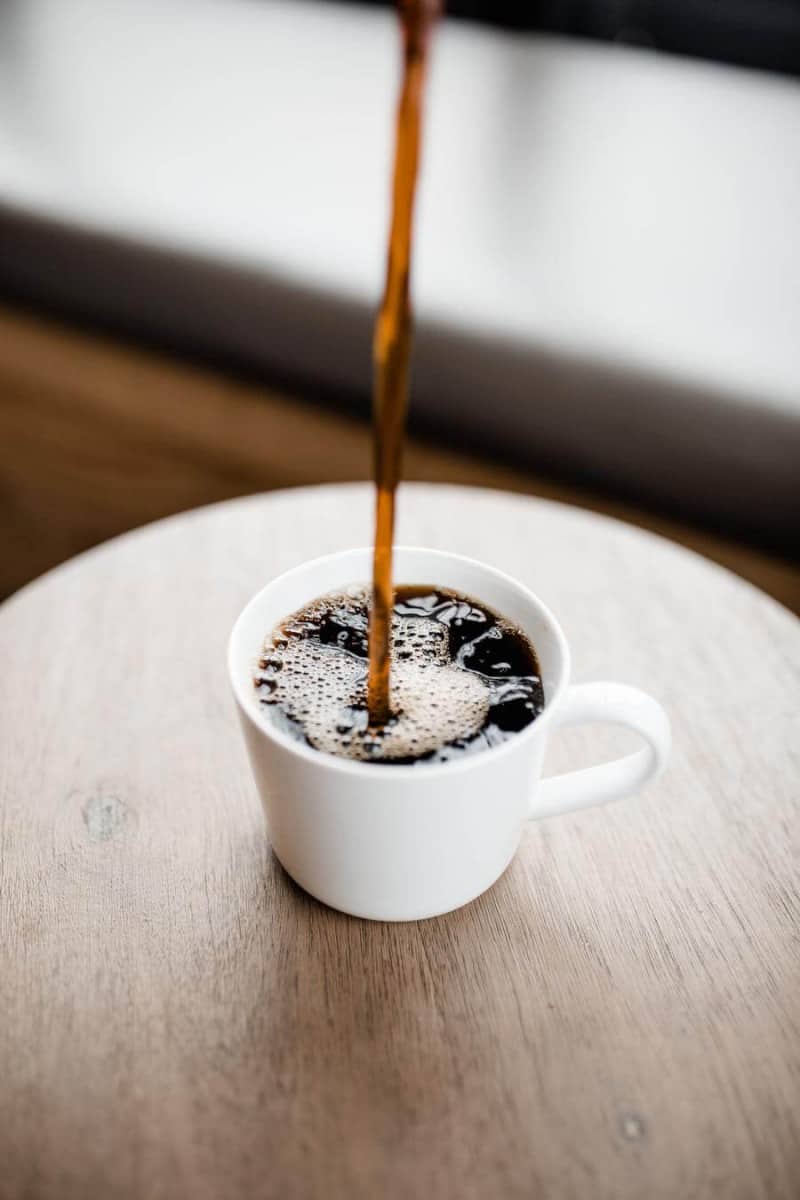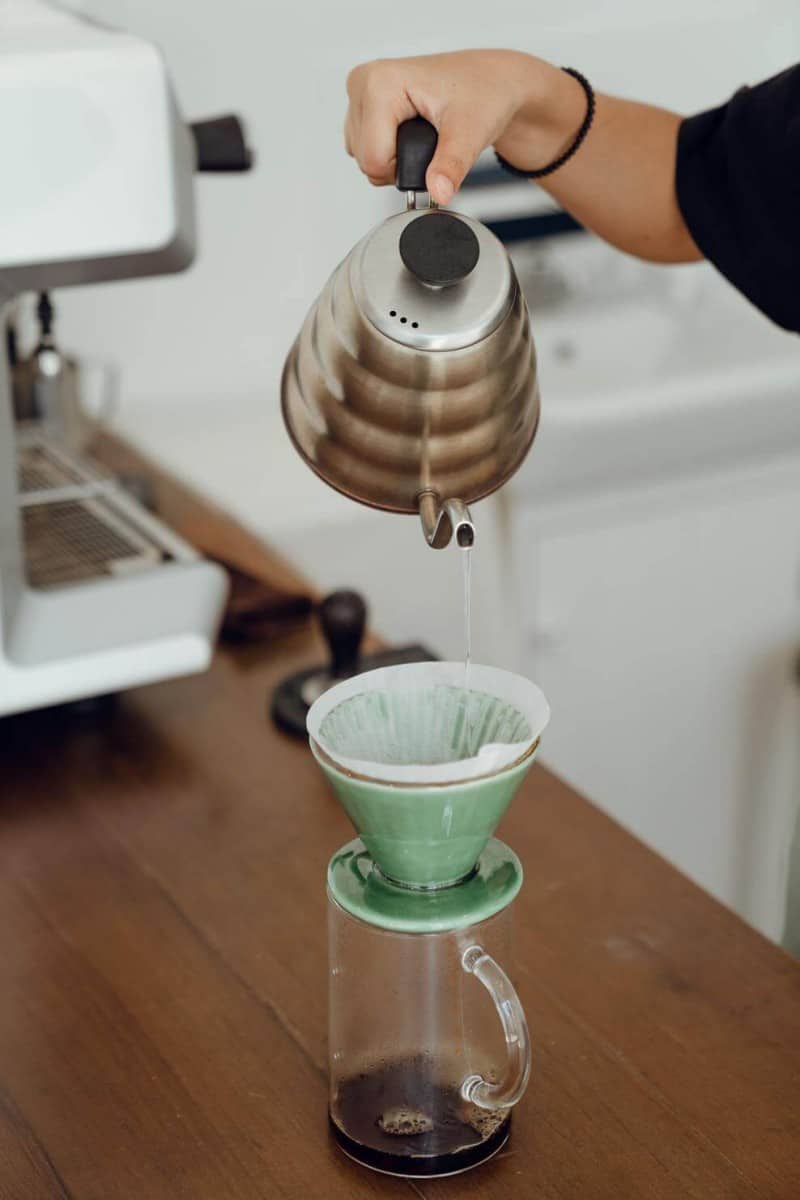Short Answer: Filter coffee and espresso differ mainly in the fineness of their grinds and in the duration of their brews. Filter coffee has a coarse grind, whereas an espresso has very fine grinds.
On the other hand, when it comes to brewing, filter coffee needs to be brewed at a lower temperature for a longer amount of time, while an espresso can be brewed quickly.
Filter and espresso are two methods of preparing coffee, with each having its own characteristics and flavor profiles.
Before diving deep into the comparison of both methods, let’s first take a closer look at both methods individually.
What is an Espresso?

Espresso is a coffee-brewing method of Italian origin. It’s brewed with high-temperature (almost boiling!), pressurized water which runs through finely-ground coffee beans.
An espresso is denser and more concentrated than filter coffee.
An espresso also serves as a base for many different drinks like Americanos, cappuccinos, flat whites, lattes, etc. The difference between all these drinks is usually the amount of steamed milk or hot water used.
What is Filter Coffee?

Filter coffee is much like espresso in which the way they are brewed are basically the same: pour hot water over coffee grounds, water passes through the grounds and a filter, then it falls straight into a container.
However, their main difference is this: filter coffee doesn’t make use of pressure. Water simply runs through the coffee grounds because of gravity. Due to this reason, the brewing process takes a bit longer.
Apart from the taste, coffee put through a paper filter may have enhanced benefits too.
Now that you have an overview of both coffee variants, let’s take a look at how they differ from each other.
Differences Between Espresso and Filter Coffee
Grind and Brewing
Filter coffee and espresso differ mainly in the fineness of their grinds and in the duration of their brews.
An espresso has finely ground coffee, while filter coffee has coarsely ground beans.
It takes a bit longer to brew filter coffee than espresso. That is because the former depends on gravity for the flow of water, whereas the latter applies pressure to speed up the process.
A study in the journal Foods found that the brewing method impacts mineral content and antioxidant activity, as well as the acidity of coffee.
Flavor
Filter coffees make a delicate brew with a sweeter taste. The acid level is milder making it easy to drink.
In contrast, espresso coffee is known to be more acidic. The flavors of the coffee beans are brought out more, making them bolder in taste.
Different Equipment Needed
Even though most filter coffee is made through an automatic drip, it’s always better to go for a manual way of brewing the coffee as it allows you to control the brewing process and get the most flavor out of your beans.
When considering espresso, the original way of making it is by using an espresso machine that can create the required pressure is brewing.
However, you can also make espresso-style coffee using lower-cost options such as stove top, French Press, or an Aeropress.
Caffeine Content
It is a common misconception that espresso contains a higher caffeine content than filter coffee. However, the reality is actually the opposite.
Filter or drip coffee takes longer brewing time, thus, it extracts the naturals oils, sugars, and caffeine much more slowly, which gives you a more nuanced cup but one that contains a slightly higher amount of caffeine.
Apart from that, espresso beans are roasted darker than the ones used in filter coffee. More roasting also makes the beans lose some of their caffeine content.
According to a study, one cup of brewed coffee (8 oz.) contains about 70–140 mg of caffeine, or about 95 mg on average, whereas one shot of espresso is generally about 30–50 ml (1–1.75 oz.), and contains about 63 mg of caffeine.
The bottom line is, both espresso and filter coffee contain caffeine. But the more important thing is to be mindful of staying below the recommended dose of 400 mg of caffeine per day by the Food and Drug Administration.
Too much caffeine can cause:
So it’s best to keep watch of the amount of caffeine you are ingesting as too much can have terrible side effects, regardless of what type of coffee you’re drinking. You can read more about the side effects of coffee here to know more.
I have summarized the main differences between filter coffee and espresso in the table below.
| Filter coffee | Espresso | |
| Types of drinks | Drip, cold brew, Nitro Brew, Freeze dried, Aeropress | Latte, Cappuccino, Macchiato, Americano, Piccolo, Cortado, Flat White, Mochaccino |
| Serving size | 8 oz. | 1-2 oz. |
| Taste | Less intense | Bolder |
| Coffee beans | Coarsely ground | Finely ground |
| Brewing time | Longer | Shorter |
Watch the video below to have a better understanding of how the two drinks differ from each other.
Is Filter Coffee Stronger Than Espresso?

Yes, filter coffee is proven to be stronger than espresso. The reason being the higher caffeine content in filter coffee.
Although espresso is popular for being strong in flavor and easy to prepare, that speed hinders the full extraction of the caffeine from the coffee grounds.
As stated above, the difference in caffeine level is due to the longer extraction time in a drip filter.
Which One Is Healthier? Espresso or Filter?
Filter coffee is considered to be the healthier option of the two because it soaks up the cafestol, a chemical that can raise LDL or bad cholesterol, and does not allow it to be in your drink.
If taken in moderation, coffee is considered a healthy drink because of the high amount of antioxidants present in it. Which kind is the healthiest, however, is up for debate.
There is no right answer to this. While some espresso lovers may argue about it being higher in antioxidants and lower in calories, others may come up with the fact that filter coffee may be better as it doesn’t let the cafestol (bad LDL boosting chemical) pass through it.
It should also be kept in mind that the kind of coffee beans and any other ingredients (sweeteners etc.) that you add to your coffee also affects how healthy it is.
The following table compares some of the nutritional facts of both drinks.
| Filter coffee | Espresso | |
| Serving size | 8-12 fluid ounces | 2-3 fluid ounces |
| Calories | 2.4 | 5.4 |
| Caffeine | 96 mg | 127 mg |
| Calcium | 4.8 mg | 1.2 mg |
| Zinc | 0.048 mg | 0.03 mg |
To Sum It All Up
Espresso and filter are both coffee preparation methods that result in different outcomes despite containing the same ingredients.
Filter coffee has a coarse grind, whereas an espresso has very fine grinds. On the other hand, when it comes to brewing, filter coffee needs to be brewed at a lower temperature for a longer amount of time, while an espresso can be brewed quickly.
Other differences between the two include the flavor and caffeine content and the equipment required to prepare each.
Even though the flavor of a filter coffee is milder and less intense than that of espresso, it actually has more caffeine.
Another consideration is how you like to drink your coffee.
As espresso has a thick, syrupy nature, it blends with milk in a very smooth and consistent manner. The richness of the steamed milk usually takes out more of the sweet flavor of espresso, and you can enjoy it in the form of cappuccinos, flat whites, or lattes.
Filter coffee, by comparison, has a cleaner, and less acidic flavor. It’s usually taken black.
At the end of the day, the choice depends on your preferences.
Which type of preparation method do you like best?
Other Articles
- Cappuccino VS Latte (What’s The Difference?)
- Espresso VS Ristretto (Comparison)
- Arabica VS Robusta (Compared)
Contents

